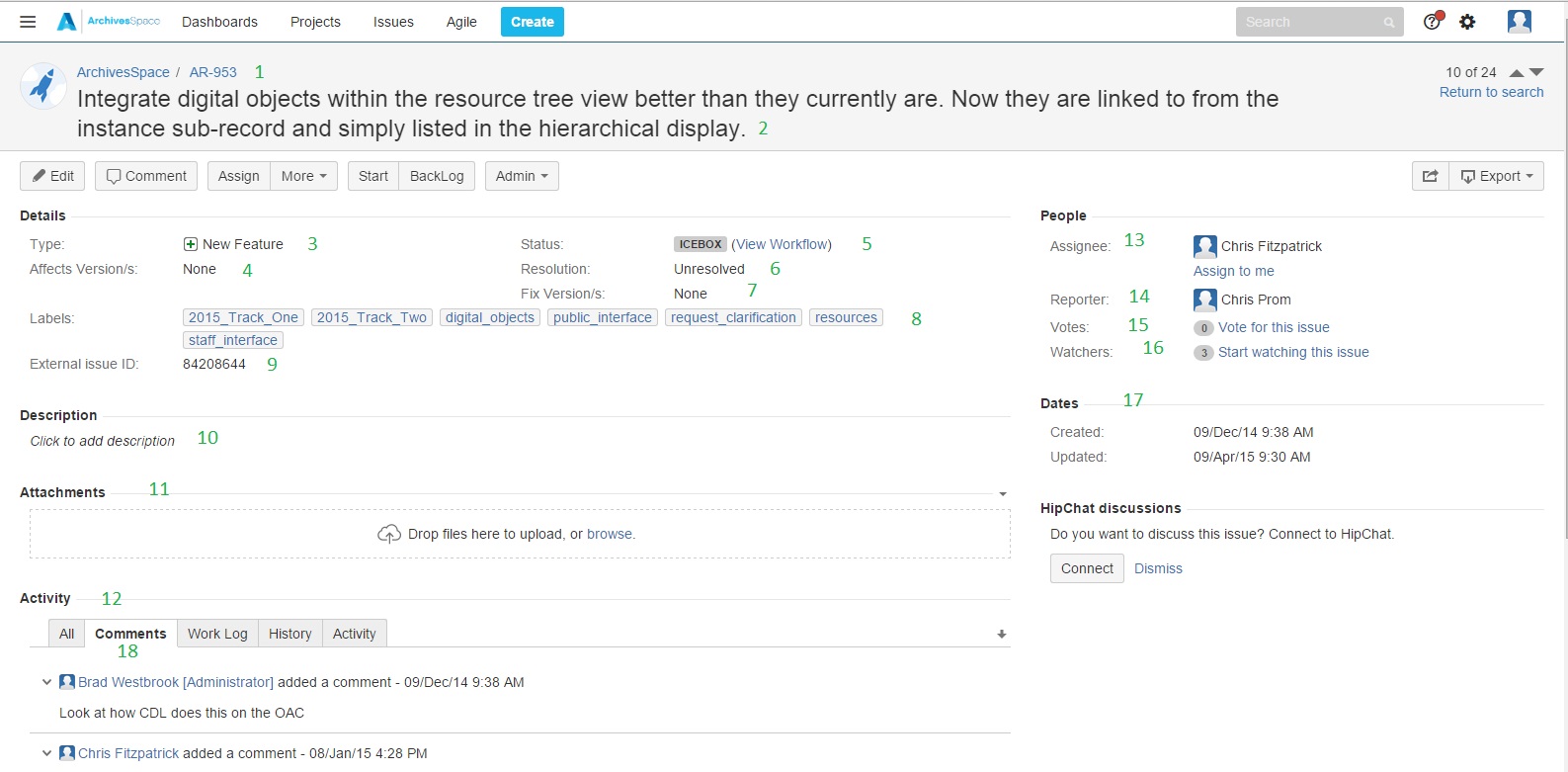Key to a JIRA issue record
- Issue Key - a unique identifier for the issue
- Summary - a short, usually one-sentence, description of the issue
- Type - See the Glossaries for descriptions of the types in use by ArchivesSpace.
- Affects Version/s - identifies the version to which a feature request or bug report pertains.
- Status - indicates where a story is in the development workflow. In the now closed AR project, status options are from beginning to end: Icebox > Started > Finished > Delivered > Rejected (user story returns to beginning of process) | Accepted.
In the new, active ANW project, the major status options, in workflow order, are Newly Added > Awaiting More Information > Awaiting Prioritization > Ready for Implementation > Assigned to Developer > Development Started > Ready for Testing > Ready for Inclusion in Release Candidate > Closed (You can also view the full Workflow Diagram and Narrative, with all statuses.) - Resolution - indicates whether or not the issue has been addressed - typical values are Unresolved or Fixed
- Fix Version/s - identifies the version in which the a bug was fixed or a feature implemented.
- Labels - keywords that relate to this issue; one or more labels may be applied. See the Glossaries for descriptions of many of the labels currently in use.
- External Issue ID - the unique identifier from Pivotal Tracker, the system used prior to JIRA and from which many of the issues were imported. This only appears on user stories migrated from Pivotal Tracker.
- Description - a fuller description of the issue (not always used if the summary describes the issue in enough detail)
- Attachments - some issues have external documents such as specifications or screenshots that further describe the issue
- Activity - a log of any changes to the issue as well as a place to participate in discussion of the issue
- Assignee - the developer tasked with working on the issue
- Reporter - the person who first logged the issue into JIRA
- Votes - The number of votes the issue has received (from times when votes are solicited for groups of issues)
- Watchers - The number of people following the issue and receiving notification when it has been updated.
- Dates - indicates when the issue was created and last updated in JIRA
- Comments - Additional information about the user story, such as adjustment to descriptions or specifications, references to related user stories or sources, or explanation of why a user story was not accepted.
